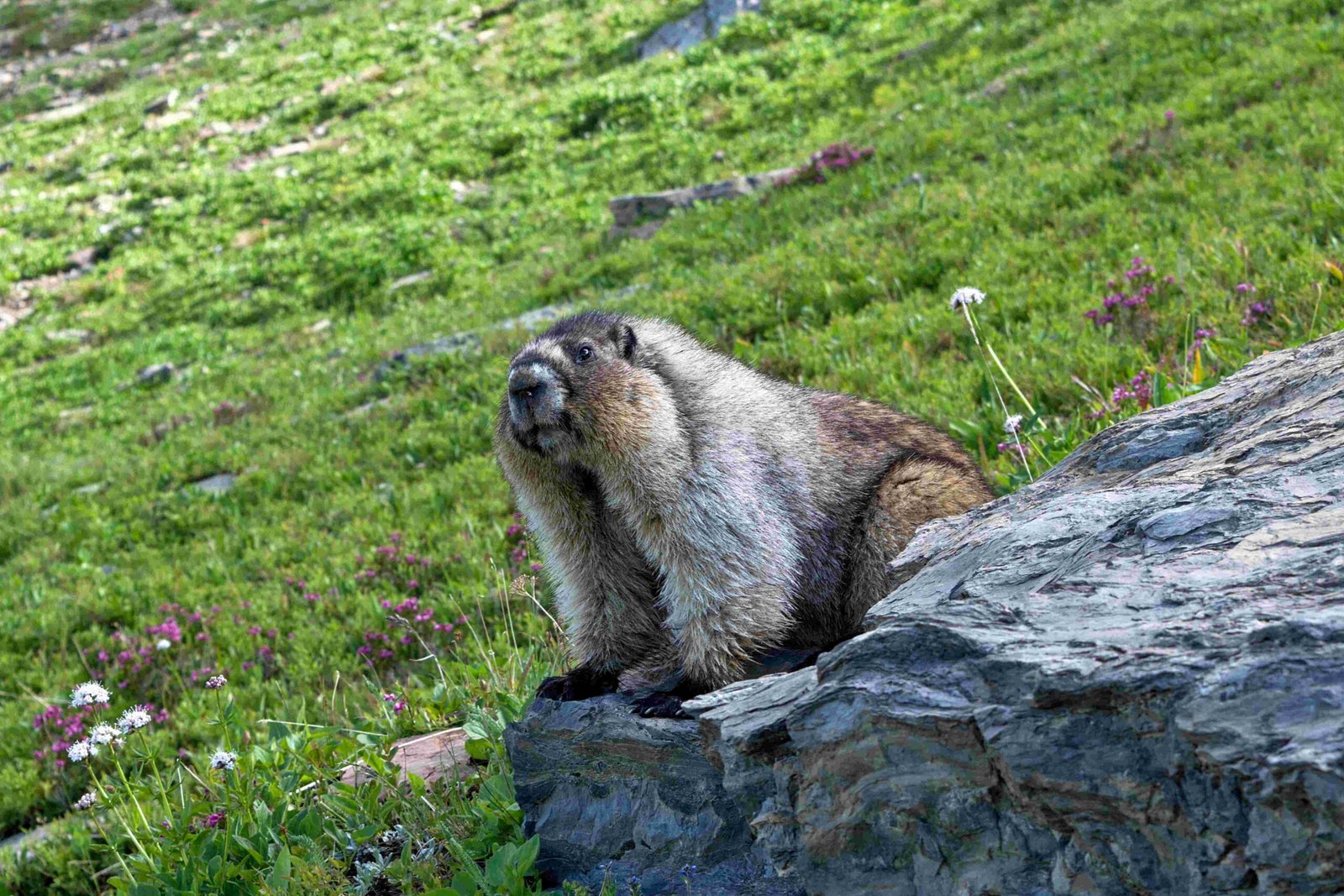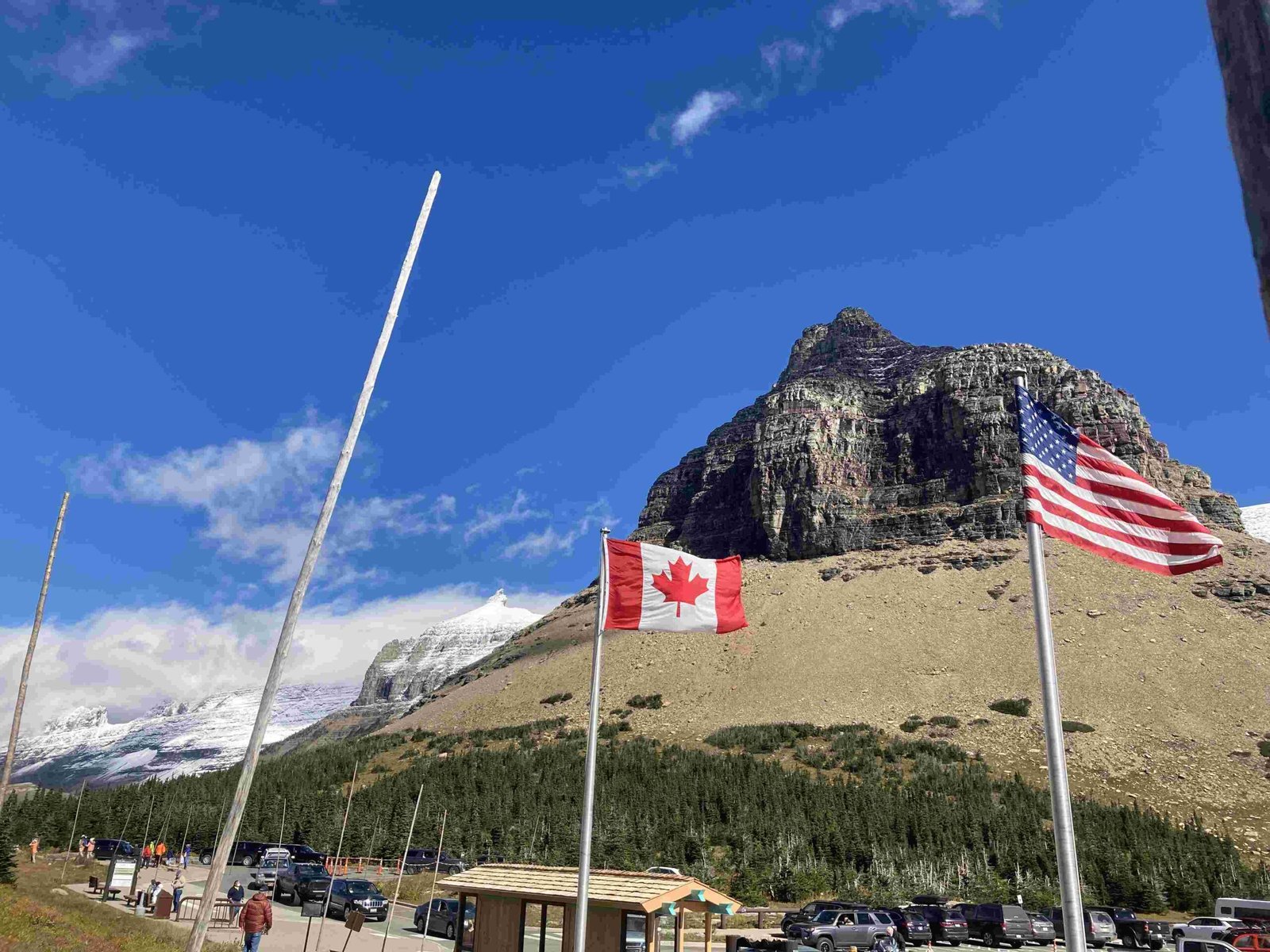Running Eagle Falls, also known as Trick Falls, is the easiest waterfall hike in Glacier National Park. This 0.7-mile roundtrip trail offers minimal elevation gain and takes about 30 minutes to an hour to complete. Located in the Two Medicine area, the trail is accessible from the Running Eagle Falls Trailhead and is suitable for all ages and abilities, including those with mobility challenges.
What Makes Running Eagle Falls the Easiest Waterfall Hike?

Running Eagle Falls stands out as the easiest waterfall hike in Glacier National Park for several reasons:
- Short distance (0.7 miles roundtrip)
- Minimal elevation gain
- Well-maintained, wide path
- Handicap accessible
- Quick completion time (30 minutes to 1 hour)
This combination of factors makes it an ideal choice for families, beginners, and those with limited mobility or time constraints.
What Are the Trail Details for Running Eagle Falls?

Here’s a detailed breakdown of the Running Eagle Falls trail:
| Trail Aspect | Details |
|---|---|
| Length | 0.7 miles roundtrip |
| Elevation Gain | Minimal |
| Estimated Time | 30 minutes to 1 hour |
| Difficulty | Easy |
| Accessibility | Handicap accessible |
| Trailhead Location | Running Eagle Falls Trailhead, Two Medicine area |
The trail’s ease and accessibility make it a perfect introduction to the natural beauty of Glacier National Park.
What Can Hikers Expect on the Running Eagle Falls Trail?
Hikers on the Running Eagle Falls trail can expect:
- A wide, well-maintained path suitable for all skill levels
- Minimal elevation change, making it easy for children and seniors
- Beautiful forest scenery leading to the waterfall
- A unique ‘two-in-one’ waterfall experience (hence the name ‘Trick Falls’)
- Opportunities for wildlife viewing (always maintain a safe distance)
- Interpretive signs providing information about the area’s ecology and history
The trail offers a rewarding experience without the physical demands of longer, more strenuous hikes in the park.
What Are Other Easy Waterfall Hikes in Glacier National Park?
While Running Eagle Falls is the easiest, there are other relatively easy waterfall hikes in Glacier National Park:
- St. Mary Falls
- Distance: 1.7 miles roundtrip
- Elevation Gain: 260 feet
-
Highlights: Option to continue to Virginia Falls (additional 1.4 miles)
-
Trail of the Cedars (including Avalanche Creek)
- Distance: 1 mile loop
- Elevation Gain: Minimal
-
Highlights: Wheelchair-accessible boardwalk, ancient cedar forest
-
Redrock Falls via Swiftcurrent Pass Trail
- Distance: 3.6 miles roundtrip
- Elevation Gain: 285 feet
- Highlights: Series of cascading waterfalls, wildlife viewing opportunities
These trails offer varying degrees of difficulty while still being suitable for most visitors.
How Does Running Eagle Falls Compare to Other Easy Waterfall Hikes?
Here’s a comparison of Running Eagle Falls to other easy waterfall hikes in Glacier National Park:
| Trail Name | Distance (roundtrip) | Elevation Gain | Accessibility |
|---|---|---|---|
| Running Eagle Falls | 0.7 miles | Minimal | Handicap accessible |
| St. Mary Falls | 1.7 miles | 260 feet | Not wheelchair accessible |
| Trail of the Cedars | 1 mile | Minimal | Wheelchair accessible |
| Redrock Falls | 3.6 miles | 285 feet | Not wheelchair accessible |
Running Eagle Falls stands out as the shortest and most accessible option among these trails.
What Should Hikers Bring for the Running Eagle Falls Trail?
Even though Running Eagle Falls is an easy hike, it’s important to be prepared. Hikers should bring:
- Water (at least 1 liter per person)
- Snacks or a light picnic
- Comfortable walking shoes
- Sun protection (hat, sunscreen, sunglasses)
- Insect repellent
- Camera
- Binoculars for wildlife viewing
- Light jacket or layers (weather can change quickly in the mountains)
- Bear spray (available for purchase or rent in the park)
Remember to follow Leave No Trace principles and pack out all trash.
When Is the Best Time to Hike Running Eagle Falls?
The best time to hike Running Eagle Falls depends on several factors:
- Season: The trail is typically accessible from late spring to early fall (May to October), depending on snow conditions.
- Time of Day: Early morning or late afternoon for better lighting and fewer crowds.
- Water Flow: Spring and early summer offer the most impressive water flow due to snowmelt.
- Wildlife Activity: Dawn and dusk are prime times for wildlife viewing, but be extra cautious during these times.
Always check current trail conditions and park alerts before setting out on your hike.
How Can Visitors Access the Running Eagle Falls Trailhead?
To access the Running Eagle Falls trailhead:
- Enter Glacier National Park through the Two Medicine entrance.
- Follow the main road to the Two Medicine area.
- Look for signs directing you to the Running Eagle Falls parking area.
- Park in the designated lot at the trailhead.
Note that the Two Medicine area is less crowded than other parts of the park, offering a more serene experience.
What Safety Precautions Should Hikers Take on the Running Eagle Falls Trail?
While Running Eagle Falls is an easy hike, safety should always be a priority:
- Stay on designated trails to protect yourself and the environment.
- Be aware of wildlife, especially bears. Make noise while hiking and carry bear spray.
- Do not approach or feed any wildlife.
- Check weather forecasts and be prepared for sudden changes.
- Inform someone of your hiking plans, especially if hiking alone.
- Bring a basic first aid kit, even for short hikes.
- Respect park rules and regulations.
By following these precautions, hikers can ensure a safe and enjoyable experience on the Running Eagle Falls trail.